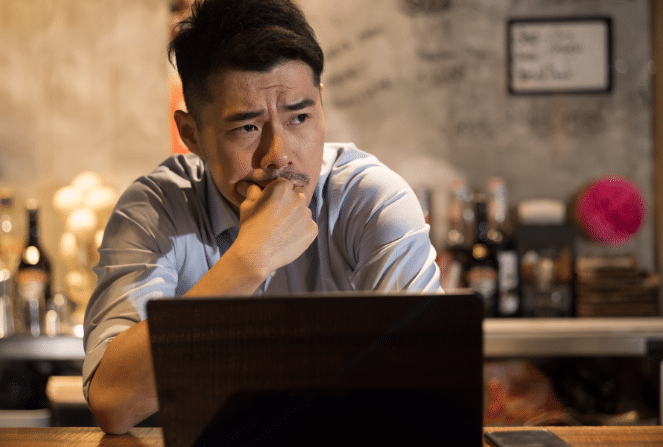Much like other industries such as healthcare, construction, and manufacturing, restaurants must comply with OSHA rules and regulations for the safety of employees and customers.
If you’re not familiar with OSHA (or you need to brush up), here’s a quick primer.
What is OSHA?
OSHA stands for the Occupational Safety and Health Administration, or OSHA, as part of the Occupational Safety and Health (OSH) Act of 1970. It was created as a response to the rising number of workplace deaths and injuries during that time. OSHA sets and enforces certain standards in an effort to keep working men and women safe and healthy while working at their place of employment. These standards are reinforced with training, outreach, education, and assistance for employers and their employees.
OSHA Rules and Regulations for Restaurants
Restaurants are subject to the same standards as factories and other work environments, though the implementation might differ. OSHA provides specific rules and regulations that restaurant owners must adhere to “keep their workforce free of serious recognized hazards,” according to the OSH Act. These include:
- Posting an official OSHA poster that notifies employees of their rights under the OSH Act and a list of the owner’s obligations. The poster should be placed in a highly-visible area where there is a lot of floor traffic.
- Keeping accurate and updated records of accidents and injuries that occur in the workplace.
- Reporting any work-related fatalities, hospitalizations, loss of limbs or eyes to OSHA within eight hours of being altered of the event.
- Allowing employees and their representatives easy access to their medical records.
- Ensuring employees there will be no retaliation if they bring up safety concerns or contact OSHA.
New requirements and safety standards for restaurants are being enforced due to the Covid-19 pandemic. One of them requires employers to report any cases of the virus among restaurant staff. Others include:
- Limiting direct contact with the public through takeout or curbside services
- Encouraging employees who are sick or show symptoms to stay home
- Training workers in proper hygiene practices
- Cleaning and disinfecting surfaces on a regular basis using only cleaning chemicals on this list
- Allowing workers to wear masks or other protective gear to help prevent spread
- Communicating regularly about any health and safety concerns
For more on OSHA’s standards, refer to the Young Workers – Restaurant Safety page on the OSHA website.
Restaurant Employee Protections Under OSHA
As a restaurant owner, your employees can file two types of complaints:
- Safety and health complaints – These are filed by employees who believe they are working under unsafe work conditions or the atmosphere is detrimental to their health.
- Protection from retaliation complaints – Employees can file a complaint if he or she believes they have been retaliated against for voicing concerns about the health and safety of their work environment to OSHA.
Your restaurant employees also have other rights under OSHA, including these key protections:
- A safe and healthy workplace
- The ability to file a worker’s compensation claim if injured on the job
- Minimum wage payment, whether through hourly pay, tips or both
- Overtime pay if more than 40 hours are worked a week
- A 30-minute meal break during any shift longer than six hours
- Protection from discrimination
- Protection by laws for minors (if under 18 years of age)
How To Keep Your Restaurant OSHA Compliant
Following OSHA rules and regulations in your restaurant is essential for happy and healthy employees. There are a number of ways to make sure you reinforce safety and health standards in your kitchen and dining area:
- Communication – One of the most important things you can do to ensure the health and safety of your employees is to openly communicate with them, and encourage them to do the same. This means practicing patience and good listening skills without judgement, offering valuable feedback and guidance, and making them feel valued.
- Training – Employers are required by OSHA to train their employees on the health and safety of their profession. This includes instructing them on the use of tools and machines necessary for them to perform their jobs, as well as emergency procedures.
- Ergonomics – The most common type of injury in restaurants are sprains and strains, burns, lacerations and puncture wounds, and eye injuries. Make sure employees have the equipment needed to perform their jobs safely, and are able to use it in the most comfortable way possible.
- Floors – Slips and falls are the most preventable accidents but they can result in serious injuries. Make sure floors are clean, not slippery and are clear of obstructions. Wherever employees have to stand for a long time, such as at prep and cooking stations, provide a padded surface to avoid back and leg strain.
- Heat – Train employees on how to work safely around heat in a commercial kitchen to avoid burns, hot oil splashes and hot plates.
Maintaining and enforcing OSHA standards is essential to help keep your employees safe. But the Covid-19 pandemic has shown a new light on the importance of restaurant cleanliness and safety. Using software that allows employees access to their tips without handling cash is one very important way to help deter the spread of Covid-19 and ensure you’re following OSHA guidelines.







